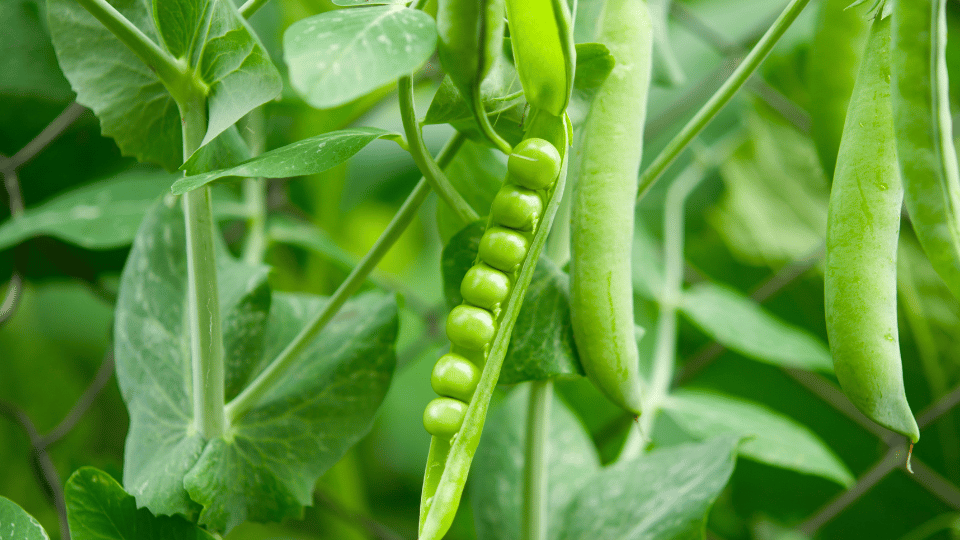Pulses in pet food: achieving a balance

The low price and high-protein properties of pulses make this ingredient very attractive, but there are some digestibility concerns to take into account.
Pulses – peas, lentils, chickpeas and beans – and their by-products have been used in pet food as raw materials of interest for over 2 decades. Their inclusion has increased in popularity alongside grain- free diets entering the pet food market. In grain-free formulations, pulses are used as sources of starch, protein and fiber to replace more conventional grains, namely rice and corn.
Pulses as a protein source
Pulses are low in price, sustainable and vegetable- based, making them an appealing source of protein for vegetarian, vegan or hypoallergenic diets. Nevertheless, the amino acid profile is far from perfect, characterized by high lysine and low methionine content. However, combined with animal-derived protein or free amino acids in an appropriate ratio, one can easily achieve a balanced amino acid profile.
The ratio of inclusion may be an important factor. Research published in Animal Feed Science and Technology in 2003 showed that more than 15% inclusion of soybean meal – which shares many similarities with pulses – can negatively influence protein digestibility and lead to lower availability of essential amino acids. One of the essential amino acids of concern is methionine, which enables several metabolic pathways and taurine synthesis in dogs.
In dogs, taurine is a non-essential amino acid synthesized from methionine and cysteine, both sulfur-containing amino acids.
It is important to note that taurine is not incorporated into proteins; rather, it is used as a mediator for biological processes. Its activity is the highest in the heart, where taurine represents approximately 60% of the total amino acid pool.
Links with heart disease and taurine deficiency?
The complex relationship between pulses in pet food and nutritional dilated cardiomyopathy (DCM) in dogs has been critically discussed for a decade, proposing different causation links. Researchers evaluated the effects of grain-based and grain-free dog foods on taurine status in a 2020 study, and their findings implied that diets high in soluble fibers could increase susceptibility to taurine deficiency, affecting the reabsorption pathway of dietary taurine.
Nevertheless, current research is still inconclusive.
It is advised that pet food manufacturers adhere to known safe inclusion rates of pulses in pet food and conduct digestibility trials to ensure formulations are performing to the standard on paper as well as in real life.
Pulses are an interesting vegetable-based protein source for dogs consuming plant-based diets. Nonetheless, the increased risk of taurine deficiency must be noted because taurine is absent in plants other than algae, and vegan diets provide marginal levels of sulfur-containing amino acids. Additionally, the high fiber content of plant ingredients may increase taurine loss. Therefore, it is crucial that vegan diets formulated for dogs contain sufficient quantities of methionine and cysteine to support their metabolic pathways as well as taurine synthesis. A review in 2018 on the nutritional adequacy of plant-based diets for pets concluded that the addition of methionine and taurine should be considered to ensure adequate dietary intake of sulfur- containing amino acids.
Influence of pulse fiber on health
Fiber derived from pulses mainly consists of resistant starch and legume oligosaccharides, a type of carbohydrate. Fermentable fiber is known to positively influence postprandial glucose and insulin responses, affecting stomach emptying and gastrointestinal transit time, making pulses a potential option for diabetes and weight loss formulations.
Pulse fibers serve as prebiotics and exhibit several health benefits such as anti-inflammatory properties. Nevertheless, oligosaccharides can lead to a higher degree of fermentation in the large intestine, resulting in higher production of gases and short-chain
fatty acids – like butyrate – by microorganisms. Fermentation and higher butyrate production benefit gut integrity and the microbiome. Nonetheless, too high of a fermentation rate would lead to negative consequences: increased fecal bulk due to higher water-binding capacity and increased flatulence. Therefore, higher pulse inclusion in pet diets is undesirable and should be avoided.
Antinutritional factors
Pulses are also known for their antinutritional factors: trypsin proteinase inhibitors, phytic acid, lectins and saponins. Antinutritional factors in pulses serve as a defense mechanism against animals and insects and as agents for plant-to-plant competition. When ingested by a pet, antinutritional factors negatively affect nutrient digestibility and absorption, palatability and food intake. They can bind to nutrients (vitamins and trace elements), making them indigestible, or directly inhibit enzymatic digestion.
Luckily, most of these compounds are sensitive to heat and can be substantially reduced by dehulling, fermentation and heat processing. Recent reviews have shown that the activities of trypsin inhibitors decreased by up to 95% by extrusion. Nonetheless, extrusion had lower success in the reduction of phytate levels (7% to 26%) and varied by legume and extrusion conditions.
As antinutritional factors may significantly influence pet health, authors conclude that pet foods with higher levels of plant-based ingredients may also require optimization of processing methods to maximize their nutritional density and nutrient bioavailability. The distribution of these antinutritional factors in different components of pulses is highly variable. Interestingly, recent research showed that some of these compounds (such as tannins) demonstrated several health benefits such as antimicrobial and antioxidative properties.
Inclusion of pulses in pet food formulations
Pulses may be an interesting source of nutrients when used to complement the other raw materials in pet food formulations. Nonetheless, an article published in the Journal of Animal Science in 2019 suggests that there is a high likelihood that legume seed use may be greater than 40% in some current formulas on the market. This inclusion exceeds the concentration previously investigated in dogs and can exhibit potentially undesirable effects.
Thus, the formulation of complete and balanced pet food diets that implement higher concentrations of pulses requires an understanding of nutrient interactions and the effects of processing that can negatively affect nutrient metabolism or digestibility. Moreover, it is advised that for diets containing high levels of legume oligosaccharides, amino acids such as taurine, methionine and cysteine should be fortified.
